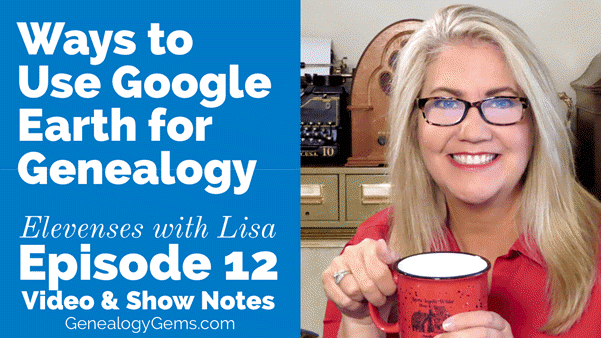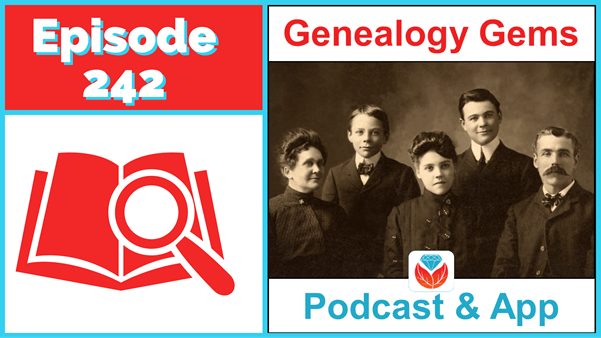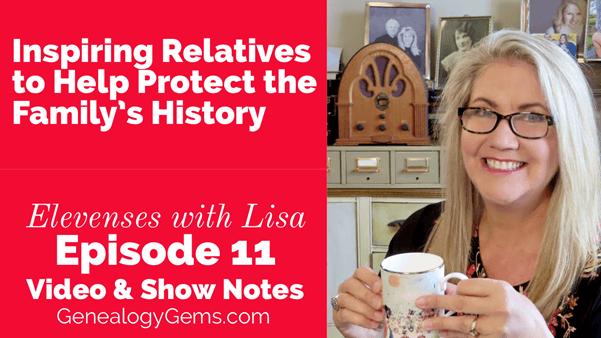by Lisa Cooke | May 7, 2015 | 01 What's New, British, DNA
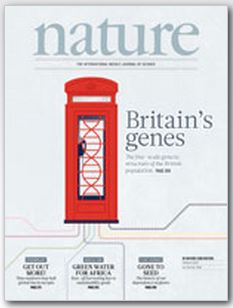
The key to learning about our ancestors from our own DNA is to have a lot of people tested who can all trace their ancestry to a specific geographic location. A groundbreaking scientific study has just been published in Nature by Stephen Leslie and colleagues that details the origins of the people of the UK. (Read the abstract here.) This study has ramifications for you, as a genetic genealogist, even if you don’t have origins in the UK.
Dr. Leslie and colleagues collected data from 2,039 Britons of European ancestry who lived in rural areas and knew that their four grandparents were all born within 80 kilometers (50 miles) of each other. This means that their DNA should accurately represent the DNA of individuals living in that area in the late 1800s. Using multiple fancy and advanced statistical methods, the researchers identified 17 distinct genetic groups. When they overlaid these groups on a map of the UK, what they found was remarkable. Each genetic group, with few exceptions, mapped to a very specific geographic location.
The largest cluster by far, encompassing half of those tested, maps to Central/South England. Well, the first serious settlers of Britain were from the Roman Empire whose influence in 43 AD at the time of their entry into Britain was extensive, from Spain to France to Italy to parts of the middle east and North Africa. Then around 450 AD the Angles, from modern day northern Germany and southern Denmark, and the Saxons, from Germany, invaded. According to linguistic and archeological evidence, the previous Roman culture was basically wiped out. But were the actual people destroyed, or just their culture?
To find out, the team compared the UK samples with 6,209 people from continental Europe to understand their ancestors’ contributions to Britons’ ancestry. According to the DNA evidence, the descendants of those first Roman settlers are still very much alive. In fact, the paper reports that Saxon ancestry in Central/South England is very likely to be under 50%, and most likely in the range of 10–40%, with instead a large portion of the genetics now being attributed to France and by extension, the Roman Empire.
Another interesting finding: the Viking conquerors were nearly genetically absent in most of the UK.
Very unfortunately, this data on DNA in the UK will not be a part of the reference samples at your genetic genealogy testing company. But it does demonstrate unequivocally that THIS WORKS! DNA testing can help us trace our ancestral origins and thanks to improved techniques and larger data sets, we have much to look forward to. Dr. Peter Donnelly, population geneticist at Oxford and co-author of this paper said, “History is written by the winners, and archaeology studies the burials of wealthy people. But genetic evidence is interesting because it complements that by showing what is happening to the masses rather than the elite.”
Learn more about DNA testing for family history with my Getting Started in Genetic Genealogy Quick Guide, available now in the Genealogy Gems store. In fact, I have a whole series of Guides there on using DNA for genealogy. Check them all out!
If you’re ready for some one-on-one consulting to see what DNA can tell you about your family history, visit my website to learn more.
by Lisa Cooke | Apr 21, 2015 | 01 What's New, Adoption, African-American, Book Club, DNA, Genealogy Gems Podcast, Genealogy TV
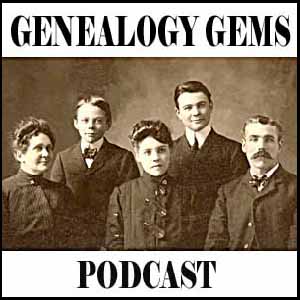 The latest episode of the free Genealogy Gems podcast (Episode 178) has been released and it’s PACKED with gems you can use now to inspire your family history!
The latest episode of the free Genealogy Gems podcast (Episode 178) has been released and it’s PACKED with gems you can use now to inspire your family history!
 First, nationally-renowned genetic genealogist CeCe Moore joins me on the show to talk about using DNA for genealogy research, adoption, and the Finding Your Roots with Henry Louis Gates, Jr. TV show.
First, nationally-renowned genetic genealogist CeCe Moore joins me on the show to talk about using DNA for genealogy research, adoption, and the Finding Your Roots with Henry Louis Gates, Jr. TV show.
I love CeCe’s analogy of using different DNA test providers to “fish in different ponds.” She talks about using different types of genetic tests (autosomal, y-DNA or mDNA) to chase answers to specific genealogy research questions, and the importance of using test results together, not in isolation. Because autosomal DNA is coming onto so many people’s radar, I ask her to explain that in more depth–its uses and its limitations. CeCe shares her favorite tips for people who are getting started and gives us lots of great buy gout medication examples, including a helpful example for African-Americans who are trying to identify a genetic ancestor (who may also have had a slaveholder relationships with the family).
 Also in this episode, we announce the newest featured title in the Genealogy Gems Book Club: The Lost Ancestor (The Forensic Genealogist)
Also in this episode, we announce the newest featured title in the Genealogy Gems Book Club: The Lost Ancestor (The Forensic Genealogist) by British author Nathan Dylan Goodwin. Listen to the episode to hear what this mystery novel is about and why we chose it.
by British author Nathan Dylan Goodwin. Listen to the episode to hear what this mystery novel is about and why we chose it.
Finally, I share some fantastic new record sets that are online now and ready for you to explore, and a Genealogy Gems listener shares an important update on adoption records in Ohio.
 Click here to listen to the free Genealogy Gems Podcast episode 178. Click here to learn more about this free podcast and see an archive of past episodes. We recently celebrated more than 1.5 million downloads of our podcasts!
Click here to listen to the free Genealogy Gems Podcast episode 178. Click here to learn more about this free podcast and see an archive of past episodes. We recently celebrated more than 1.5 million downloads of our podcasts!

by | Mar 22, 2015 | 01 What's New, DNA, Jewish
 A direct-to-consumer genetic test, the first of its kind to be approved in the U.S., may become available through 23andMe, according to letters recently received by 23andMe customers. The FDA-approved test is designed to check to see if you are a carrier for Bloom Syndrome, a disease most common among those of Jewish heritage.
A direct-to-consumer genetic test, the first of its kind to be approved in the U.S., may become available through 23andMe, according to letters recently received by 23andMe customers. The FDA-approved test is designed to check to see if you are a carrier for Bloom Syndrome, a disease most common among those of Jewish heritage.
This is a huge step for 23andMe, which lost the ability to report health related information to its U.S. customers in November of 2013 and has been working to restore it ever since. Health testing for 23andMe customers is currently underway in Canada and the UK. This is the first big step toward restoring the health component of their testing to those of us in the U.S.
This kind of direct to consumer (DTC) testing is going to be a huge industry. For those of you with any experience getting a genetic test ordered and executed through your doctor’s office, you know this process can be lengthy, not to mention very expensive.
As more and more genetic tests are able to be offered directly to you via commercial companies, there will be more competition for this kind of test, meaning that there will be more research conducted into the cheapest way to produce this kind of test. Since these are the same kinds of procedures used for our genetic genealogy testing, more research and lower costs for DTC tests means cheaper genetic genealogy tests.
In further news, 23andMe announced their intention to enter the pharmaceutical industry and begin to develop medicines to address some of the diseases and conditions it has engineered genetic tests to identify. This is a good reminder that a company we have previously lumped with the other two purely genetic genealogy companies (Ancestry and Family Tree DNA) is very much a medically-minded company.
While 23andMe does provide information regarding your ancestral heritage and provides a list of genetic cousins, it is important to realize that this company’s interest in your family tree is focused more on your family’s ailments than its ancestors. (Click here to read a Forbes article about this development, and click here for more information about the laws that are in place to protect your genetic data, including health testing.)
 Are you ready to get started with DNA testing for genealogy, or to get expert help in interpreting the tests you’ve already done? I can help! I’m “Your DNA Guide.” Consider starting with my series of genetic genealogy cheat sheets in the Genealogy Gems store:
Are you ready to get started with DNA testing for genealogy, or to get expert help in interpreting the tests you’ve already done? I can help! I’m “Your DNA Guide.” Consider starting with my series of genetic genealogy cheat sheets in the Genealogy Gems store:
- Getting Started
- Mitochondrial DNA
- YDNA, Autosomal DNA
- Using AncestryDNA
- Using FamilyTreeDNA
And visit my website to learn more my consulting services.
by Lisa Cooke | Feb 25, 2015 | 01 What's New, DNA, images, Listeners & Readers

Recently, Norma wrote in with this question about getting DNA from a hair sample:
“My sister-in-law’s father passed away before she could have his DNA tested. She does have samples of his hair. She was wondering if there is a lab who would do DNA testing for genealogy using hair samples? FamilyTree DNA and 23 and Me both do not do testing on hair. There are no other male relatives that she is aware that could be tested. She is interested in the yDNA especially.”

I turned to Your DNA Guide at Genealogy Gems, Diahan Southard, and here’s her answer:
“Good question! This is a common concern for many. Unfortunately, cut hair (which I am assuming is what you have) does not contain the necessary material for DNA testing. If he had any teeth pulled that she had saved, that would be a good source. Even sometimes a razor will work.
But even if you could find a suitable sample, as you mentioned, the standard genealogical testing companies do not accept non-standard samples. There is a company who does, called Identigene, but the testing is expensive, and really won’t give you what need, which is access to a yDNA database to look for matches.
Your best route is to continue to look for a direct paternal descendant of the line of interest. If your friend’s dad didn’t have any brothers, then what about her grandfather? Are there any first cousins around? What you are looking for is a living male who has the surname you are interested in.

If you can’t find one, your friend can still explore the autosomal DNA test, which will tell her about her paternal side, just in a less direct manner.
by Lisa Cooke | Feb 15, 2015 | 01 What's New, DNA, Findmypast, images, MyHeritage, RootsMagic
 Navigating the exhibit hall at RootsTech 2015 was often quite a feat! It was especially crowded around the booths for the two DNA testing companies represented, Family Tree DNA and Ancestry.com. There were people standing around swabbing their mouths, ready to see what their DNA can tell them about their family history.
Navigating the exhibit hall at RootsTech 2015 was often quite a feat! It was especially crowded around the booths for the two DNA testing companies represented, Family Tree DNA and Ancestry.com. There were people standing around swabbing their mouths, ready to see what their DNA can tell them about their family history.
This is exciting news for us. The more people that test, the more we can learn: collectively, as a genetic genealogy community, and personally, as we make connections with genetic cousins.
Further evidence that the genetic and genealogy communities are forming a tight bond is the announcement of a partnership by Family Tree DNA and FindMyPast. Currently the agreement is for discounted testing, but hopefully that will blossom into some badly needed genealogical tools for Family Tree DNA customers.
Ancestry was not about to be left out of the excitement! Among their other product updates announced this week that they will be enhancing their DNA Circles experience. Soon you will be a part of DNA circles that center around an ancestor that is not currently found in your pedigree chart (but maybe should be!).
Add that to the news a few months ago that MyHeritage will provide pedigree assistance to customers at testing company 23andMe, and we can surmise that genetics is now a permanent resident in genealogy. The 23andMe/My Heritage partnership will rely on pedigree data being added to MyHeritage by 23andMe customers, which will hopefully ultimately lead more people to post their genealogy online, which is very much lacking in the current offering by 23andMe.
 Exciting times are ahead! Get tested–and learn to how use your results meaningfully in your genealogy research. If you need help, check out my DNA quick guides.
Exciting times are ahead! Get tested–and learn to how use your results meaningfully in your genealogy research. If you need help, check out my DNA quick guides.
For some personal coaching, contact me through my website: YourDNAGuide.com.
Page 10 of 13« First«...89101112...»Last »



 First, nationally-renowned genetic genealogist CeCe Moore joins me on the show to talk about using DNA for genealogy research, adoption, and the Finding Your Roots with Henry Louis Gates, Jr. TV show.
First, nationally-renowned genetic genealogist CeCe Moore joins me on the show to talk about using DNA for genealogy research, adoption, and the Finding Your Roots with Henry Louis Gates, Jr. TV show.









